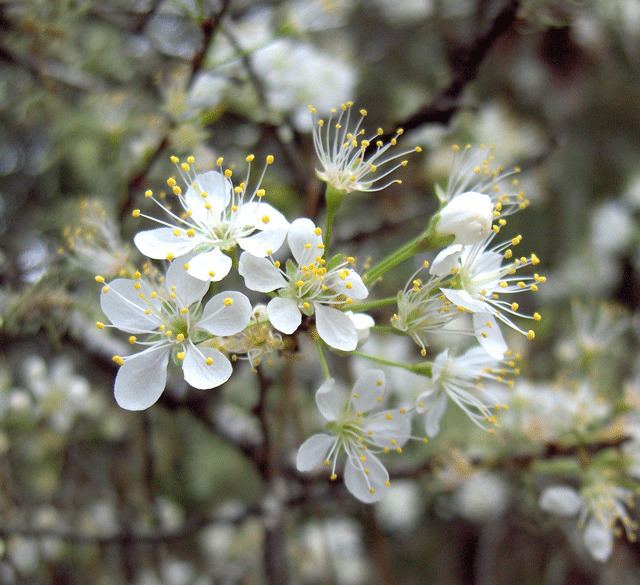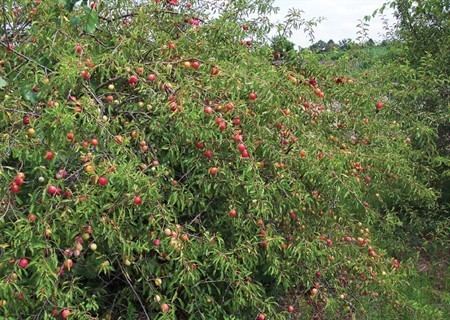Kingdom Plantae | Genus Prunus Rank Species | |
 | ||
Similar Prunus americana, Prunus umbellata, Prunus alleghaniensis, Prunus hortulana, Prunus subcordata | ||
Chickasaw plum prunus angustifolia
Prunus angustifolia pronounced (PROO-nus an-gus-tih-FOLE-ee-uh), known commonly as Chickasaw plum, Cherokee plum, Florida sand plum, sandhill plum, or sand plum, is a North American species of plum-bearing tree. It was originally cultivated by Native Americans before the arrival of Europeans. While Prunus is the classical name for European plums, angustifolia refers to its narrow leaves.
Contents

Description

Chickasaw plum grows 12 to 20 feet tall and 15 to 20 feet wide in an irregular shape. It is "twiggy" in nature, and has a scaly, almost black bark. Its branches are reddish with thorn-like, small side branches. In February, March, April and May, small white flowers blossom, 8–9 mm wide, along with red plums, up to 25 mm long. The flowers have five white petals with reddish or orange anthers. The plums are cherry-like and tend to be quite tart until they fully ripen. They ripen in late summer. It requires low to medium amounts of water to grow, and dry, sandy or loose soil. It grows best in areas with regular sunlight or areas of partial shade. In sunny areas, it will be more dense and colonize thickly. In areas of partial shade, it will be thinner and less dense, and each plant will be more spread out. P. angustifolia is very difficult to distinguish from Prunus umbellata, with which it hybridizes easily.
Location

Prunus angustifolia is widespread across much of the eastern and central United States from Florida west as far as New Mexico and Colorado, north to Nebraska, Illinois, and New Jersey, with a few isolated populations in northern Michigan. The species grows in dry and sandy soils, such as open woodlands, woodland edges, forest openings, savannahs, prairies, plains, meadows, pastures, and roadsides. It is listed by the USDA as an endangered species in the state of New Jersey.
Uses

Chickasaw plums tend to bloom early in the spring. Because they bloom early in the spring, before many other plants bloom, and require very little maintenance, they are often used in horticulture for ornamental use. They are found along many highways, especially in the southern part of the United States. The fruit is eaten by various animals. It also provides cover for nesting sites. Ripe fruits are slightly tart, but can be eaten or are sometimes made into jellies, desserts and preserves. Because of its attractive bark, small leaves and thin branches, Chickasaw plum is also sometimes used for bonsai.

